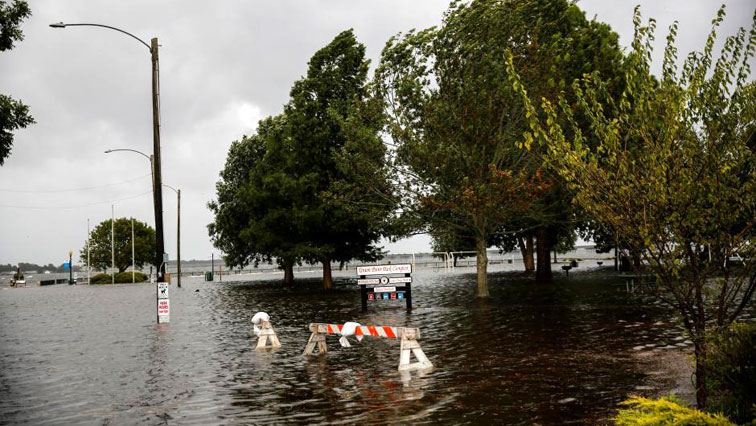Catastrophic floods raised the threat of dam breaks and landslides across the southeastern United States on Monday, prolonging the agony caused by a killer hurricane that has left more than a dozen people dead and billions of dollars in damage.
Downgraded to a tropical depression, Florence slowly crawled over South and North Carolina, dumping heavy rains on already flood-swollen river basins that authorities warned could bring more death and destruction.
The National Weather Service Weather Prediction Center warned Sunday night of “heavy and excessive rainfall over the next couple of days.”
There is an “elevated risk for landslides” in western North Carolina and southwest Virginia, as well as danger of “catastrophic and life-threatening flash flooding” in parts of the Carolinas, it said.
“A lot of people have evacuated already,” said Denise Harper, a resident of Grifton, a small North Carolina town threatened by rising water levels in a nearby creek and the River Neuse. “It’s worrying to watch the water slowly rising.”
At least 15 people have died since Florence made landfall Friday as a Category 1 hurricane near Wrightsville Beach, 10 in North Carolina and five in South Carolina.
“Unfortunately we’ve still got several days to go,” Brock Long, administrator of the Federal Emergency Management Agency, told Fox News.
Long said more havoc lays ahead as the storm broadens its geographic scope over regions deeply saturated with water.
Of particular concern were the risks to dams, already stressed by heavy rainfall from a tropical storm earlier in the month, he said, urging citizens to heed official warnings about what was now a “flood event.”
“What we have to focus on are there any dams that are potentially going to break.”
“People fail to heed warnings and get out or they get into the flood waters trying to escape their home. And that’s where you start to see deaths escalate,” he told CBS News. “Even though hurricanes are categorized by wind, it’s the water that really causes the most loss of life.”
A dull, leaden sky hung over Grifton on Sunday. Days of heavy rainfall have turned the surrounding farmland into soggy marshland.
With the rain pausing for the first time since Friday, local resident Logan Sosebee pulled out his kayak to carry food and supplies to those who need it on the other side of the flooded river.
“We still have no water and power, so I’m happy to help if I can, there’s nothing else to do,” he said. “But the current is crazy.”
“The water… has gone up 10-15 feet (3 to 4.5 meters) in a few days and it’s supposed to keep rising for a few days. I’m a bit worried for my home.”
North Carolina Governor Roy Cooper earlier told reporters “the strongest storm bands are dumping two to three inches of rain (5 – 7.5 centimeters) per hour” over regions that had already received up to two feet of rain.
“That’s enough to cause flooding in areas that have never flooded before until now. The risk is growing as well in the mountains, where rains could lead to dangerous landslides,” he said.
Forty miles to the south, the tiny town of Pollocksville, population 300, found itself cut in two on Sunday afternoon after the River Trent burst its banks.





